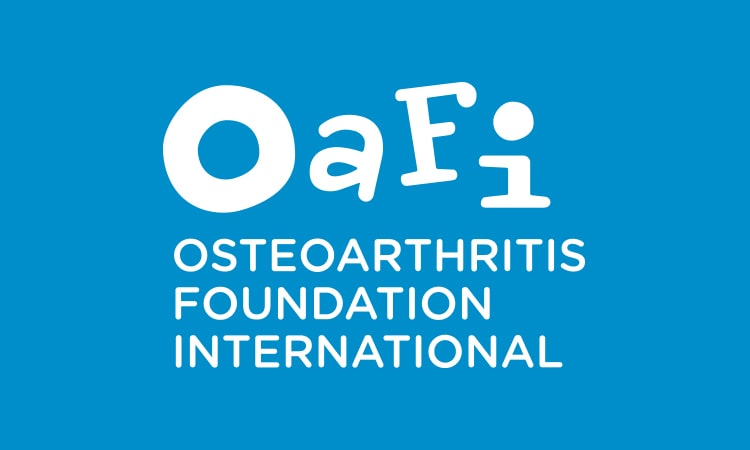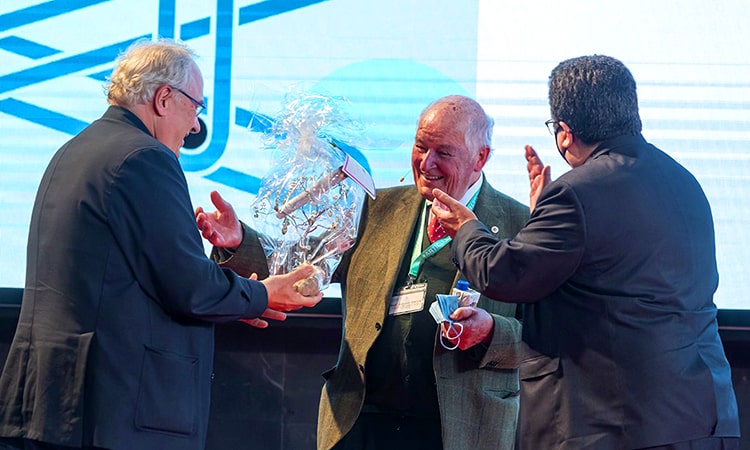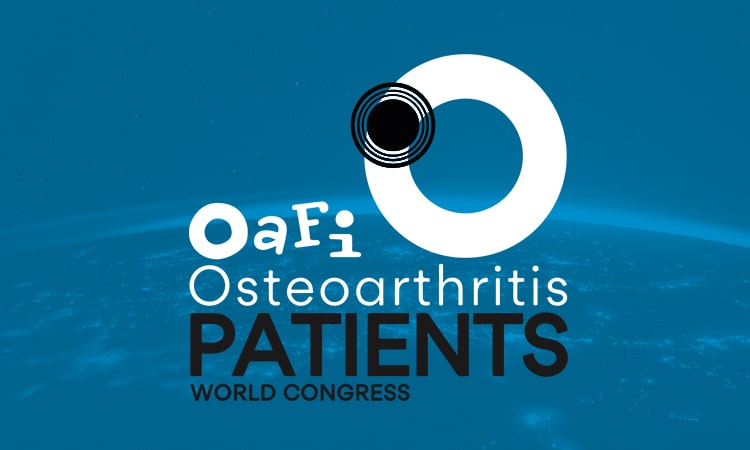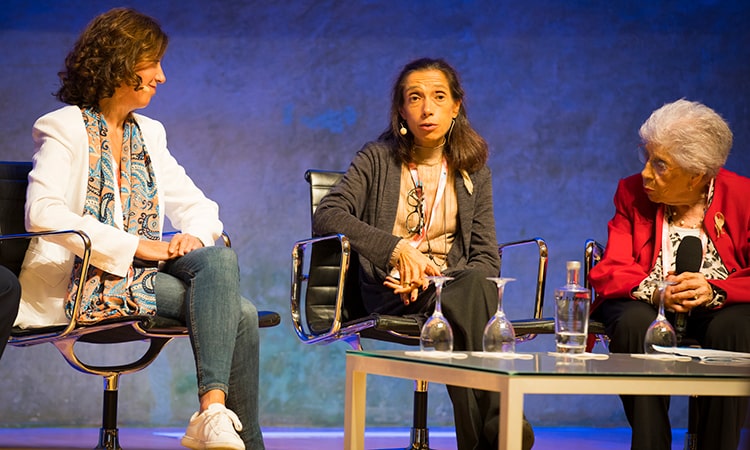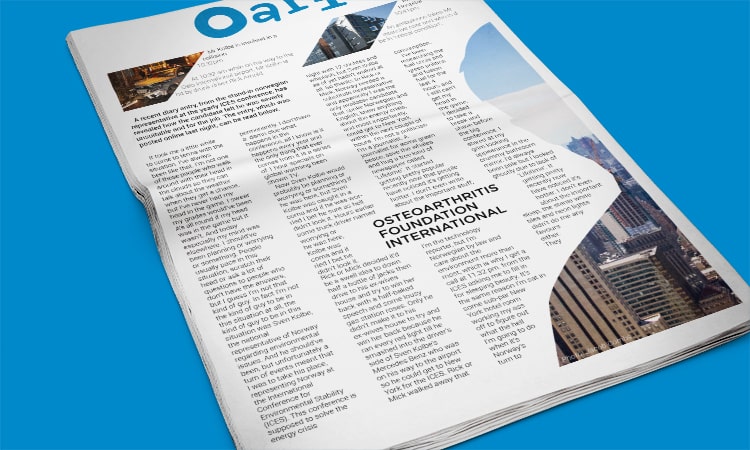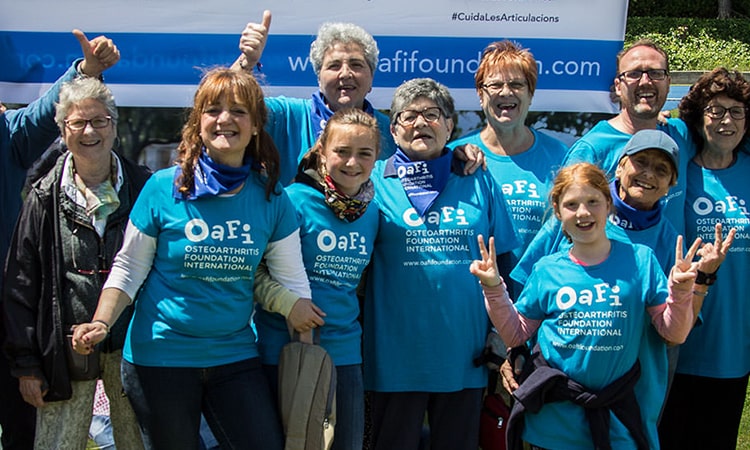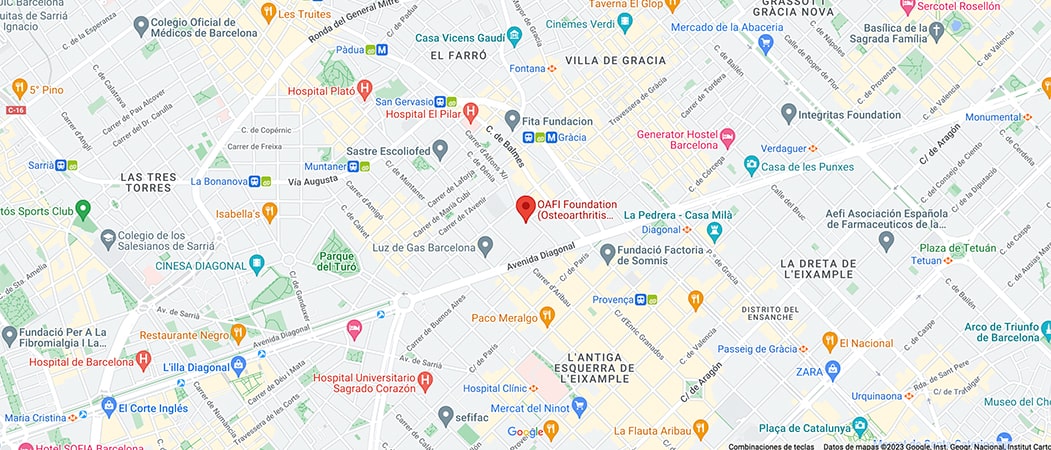- Foundation
- Actions
- Osteoarthritis
- Actuality
- OAFI Radio/TV
- Get Involved
- Contact
OAFI
Osteoarthritis International FoundationC/ Tuset, 19 · 3º 2ª
08006 Barcelona
(+34) 931 594 015
info@oafifoundation.comSchedule:
Monday-Thursday 9AM-6PM
Friday 8AM-3PM
-

-

-

1/3 of patients with osteoporosis suffer from chronic pain.

- The prevalence of osteoporosis in individuals with chronic pain reaches about 32.9%, with a maximum in the group between 55 and 75 years of age, with 53.4%, and the lowest in the group between 18 and 34 years of age, with 8%.[1]
- Osteoporosis with chronic pain is more prevalent in the female population, with a prevalence of 35.5%, compared to 29.1% in men.
Madrid, October 24, 2024– Following the presentation of the ‘Barometer of chronic pain in Spain 2022’, carried out by the Grünenthal Foundation and the Pain Observatory of the University of Cadiz, both institutions present, with the review and endorsement of the Asociación Española con la Osteoporosis y la Artrosis (AECOSAR) and the Fundación Internacional de la Artrosis (OAFI), the ‘Barometer of chronic pain associated with osteoporosis. Situation analysis of its impact in Spain’. The aim of this study was to understand and describe the epidemiological and health care characteristics of adult citizens suffering from chronic pain associated with osteoporosis.
Although osteoporosis is silent for a long time, as the disease progresses it becomes the fifth most frequent cause of chronic pain in our country, affecting 32.9%, according to the study. The chronic pain associated with osteoporosis falls into the category of chronic musculoskeletal pain, since chronic post-surgical pain derived from interventions for the treatment of osteoporotic fractures is the most common.
In this sense, osteoporosis generates an annual expenditure of 4,300 million euros for the health system in Spain, from care for long-term disability (2,200 million euros), treatments and interventions for fractures (1,800 million euros) and expenditure on drugs (300 million euros).[2]
The population between 55 and 75 years of age with osteoporosis has the highest prevalence of chronic pain (53.4%), compared to the group between 18 and 34 years of age, which has the lowest rate (8%). In relation to sex, this pathology with chronic pain affects 35.5% of women compared to 29.1% of men.
60.8% suffer a lot of pain
As for the intensity of chronic pain associated with osteoporosis, up to 60.8% of patients suffer “a lot” of pain, 29.2% qualify it as “moderate” and 6% as “unbearable”. In addition, 67.7% also suffer from sleep disorders. In relation to location, pain is mostly experienced in the extremities and/or joints in 43.3%, followed by back pain (23.8%) and generalized manifestations (19.2%) with an average duration of 8.6 years.
The most common comorbidities presented by these patients are osteoarthritis (99.8%), low back pain (68.3%), cervical pain (56.3%) and muscle contracture (54.5%). The activities of daily living most affected by the disease include getting out of a chair or bed (71.7%), sitting (56%), dressing and undressing (54.3%) and lying down (53.7%), and there are also difficulties in eating (25.5%).
Likewise, in the last year, 26.6% of the patients have been on sick leave due to pain associated with osteoporosis, with an average duration of 5.4 months. Up to 44.3% have had to give up their occupation and 11.4% have changed their job. In this sense, and as indicated in the report, it would be interesting, with a view to subsequent studies, to analyze the causes of these sick leaves in patients, in order to identify the specific origin in patients with chronic pain and in the subgroup who, additionally, suffer from osteoporosis, since it is obviously accompanied by mental impairment.
At the regional level, Castilla-La Mancha is the community with the highest prevalence of osteoporosis associated with chronic pain (41%), followed by Murcia (40.9%) and La Rioja (37.7%). However, Cantabria (19.5%), Navarra (21.3%) and the Basque Country (26.5%) have the lowest prevalence.
Traumatology, the most visited specialty
42.5% of patients with chronic pain and osteoporosis have visited the health system in the last month. Primary Care is the level of care with the highest number of visits, being used in the last month by 85.9%, followed by Traumatology with 57.3%, Physiotherapy (37.6%), Rehabilitation (35.3%) and Rheumatology (34.5%).
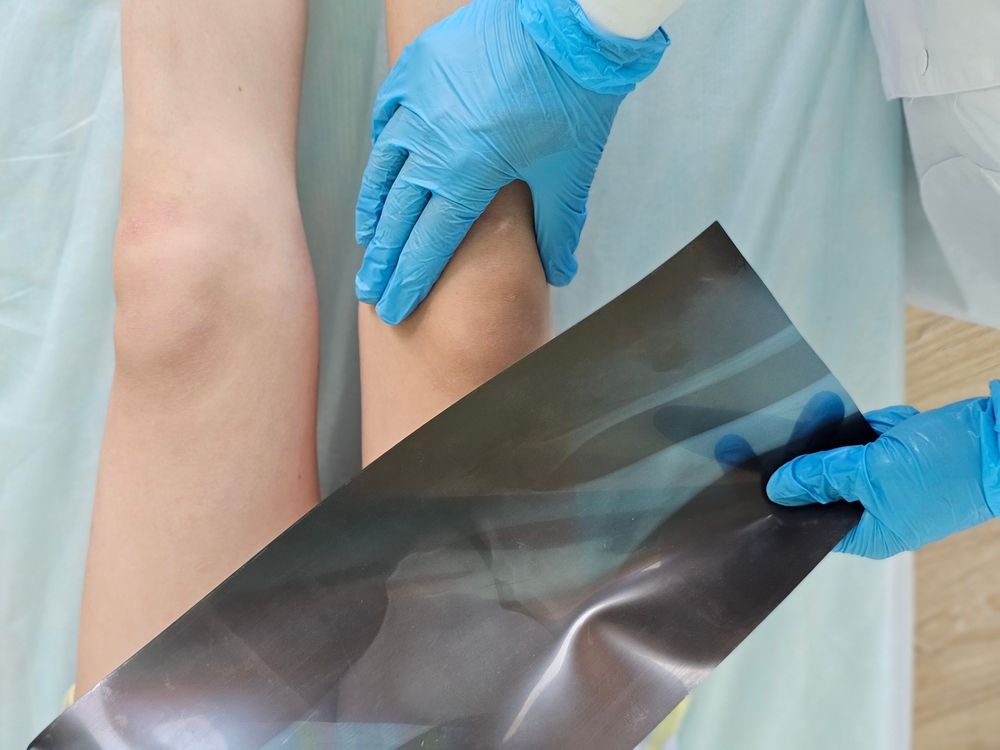
Fundación Grünenthal
The Fundación Grünenthal was born in 2000 with the aim of improving the quality of life of patients with pain, which is evident in every step it takes and in every initiative in which it participates. Under this premise, its activities are based on the development of initiatives related to the development of knowledge, training and dissemination, to mitigate the repercussions of suffering and deterioration in the quality of life of patients suffering from pain.
The Spanish Association with Osteoporosis and Osteoarthritis (AECOSAR), registered in the Ministry of the Interior, with number 133.333 and the Osteoarthritis Foundation International (OAFI), registered in the Direcció General de Dret i d’Entitats Jurídiques de Cataluña, with number 2. 965, are both non-profit organizations whose mission is to promote the rights and duties of people affected by osteoporosis and other osteoarticular pathologies, as well as of Spanish citizens in health matters; they promote training, empowerment and collaboration with national, regional and local administrations, scientific societies, other institutions and organizations that defend the interests of patients.
[1] Barometer of chronic pain associated with osteoporosis. [Internet]. Grünenthal Foundation and Pain Observatory of the University of Cadiz. Madrid: BioInnova Consultig; 2023. [Cited 14 Oct 2024].
Available in: https://www.fundaciongrunenthal.es/fundacion/con-la-ciencia/barometro-dolor-cronico-espana-2022
[2] Fundación Internacional de Osteoporosis, 2021. Un nuevo sistema de puntuación para la osteoporosis en la UE 27+2 – España.
Categories :
